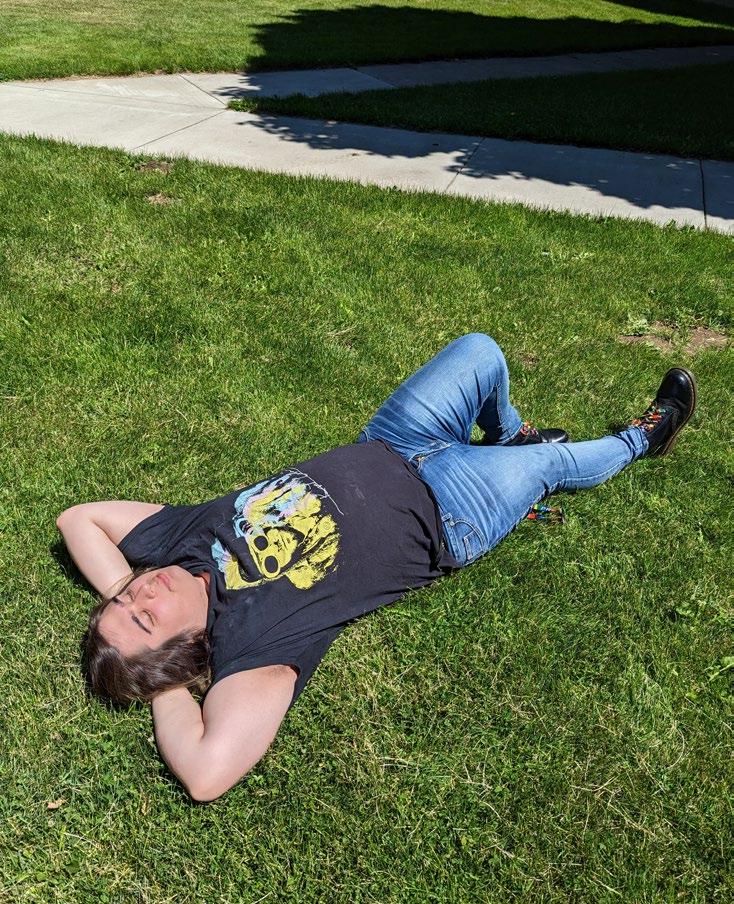
3 minute read
Letters from the Editors
Avast CWU, Morgana here! It’s been nothing short of an honor to have the privilege to put together this orientation issue for you all. My vision when writing this was to have it be a harmony of resources and stories that could benefit new students, while also putting together a portfolio of some of our best pieces from this past year as a publication. I hope you can agree that our best was put on display here, I’d love to hear from you what you think our best article this year was.
Connect with us on CWUObserver.com or email us some input if you have a response to our newspaper, CWUObserver@gmail.com. If you want to join our class as a journalist, copy editor, graphic designer, photographer, online manager or anything of the sort, please don’t hesitate to join us by reaching out to our email and registering for COM444 this fall.
Advertisement
Hope you’re staying cool this summer CWU,
I hope that no matter the season, your compass is pointed to the horizon.
Hoping for calm waters again,
Morgana Carroll Orientation
Editor
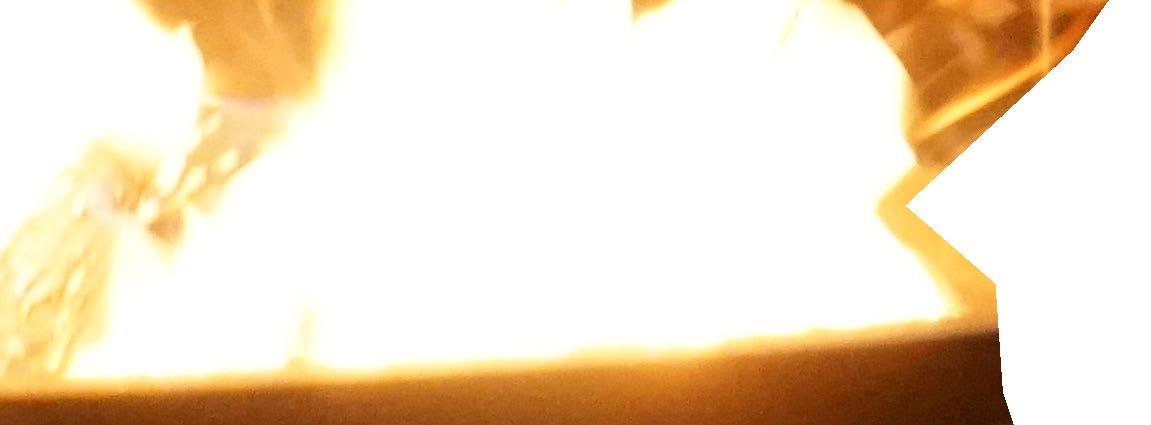
It’s been a riot to work with Morgana, Brandon, Jen and Gretchen on the orientation issue this spring, a compilation of our greatest hits throughout the year featuring the stories that showcase the best of our students as well as our student journalism. Morgana chose to name this issue The Stories that Shape Us, to center writing that showcases Ellensburg and shine a light on social justice movements in our community. The arts are such an important part of CWU, some of our most thriving departments, and we are grateful to feature music, dance and art gallery coverage in The Kiln section on pg. 42-43, as well as an arts zine section on pg. 44-45 with poetry and photography contributed by our editorial staff and a guest columnist. We hope you’ll find something you relate to in this issue, that you’ll share it with those around you or cut it up to create a vision board!
Take care of yourselves and stay hydrated,
Katherine Camarata Assistant Orientation Editor
Brittany Cinderella
Yohanes Goodell
Isaac Hinson
Jacqueline Hixxsen
Charis Jones
Mykah Koke-Filimaua
Kai Kyzar
Zileni Milupi
Hunter Rhea
Megan Rogers
Beau Sansom
Quincy Taylor
Andrew Ulstad
Jordyn Rossmeisl
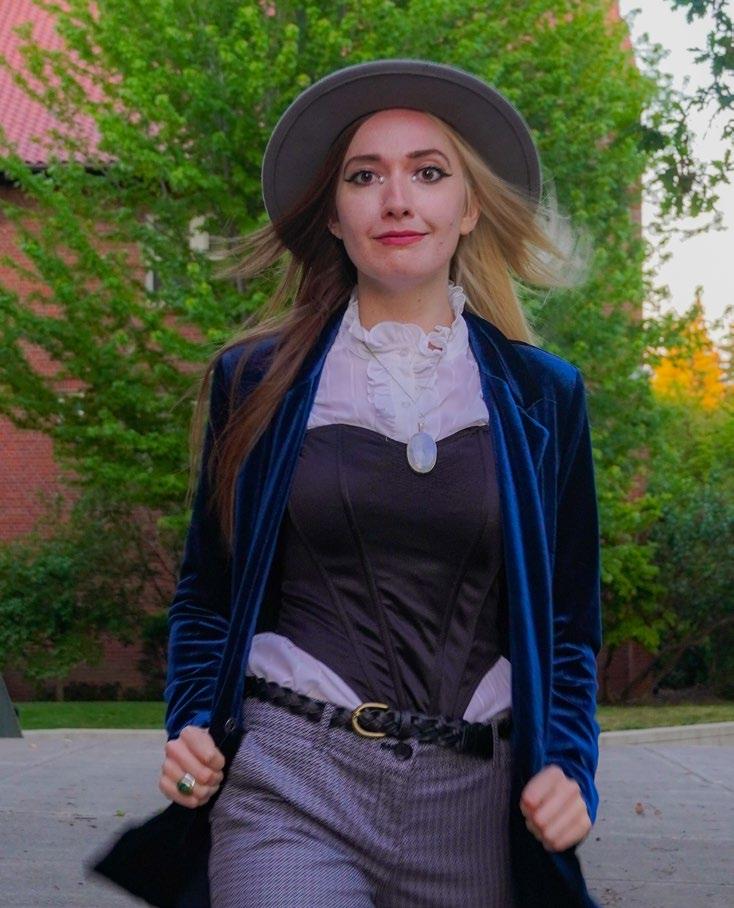
Page 32-Gender experience spread
Page 33-A ranking of the taco trucks in town
Page 34-Satire Spread: Bert and Ernie return to their alma mater and President Wohlpart’s new home
Opinions Sports: Go Cats!
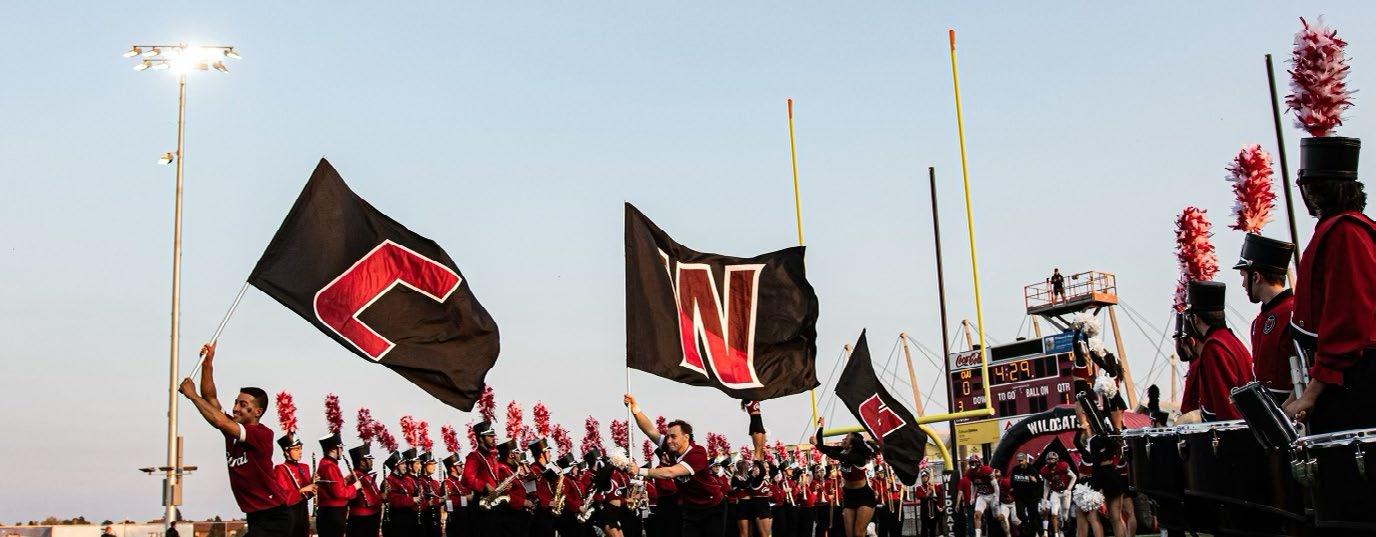
Page 35-What sports are available on campus
Page 35-Meet Patrick Rogers, All Star Defensive Back
Page 36-Coach profiles
Page 37-CWU Athletes make Hall of Fame
Page 38:Meet The Roberts
Page 39-Local Talent
Page 39-Burgstock
Page 40:Orchesis
Music and Melody The Kiln
Page 42-SOIL, Seattle Art Collective

Page 43- Nuwave Gallery
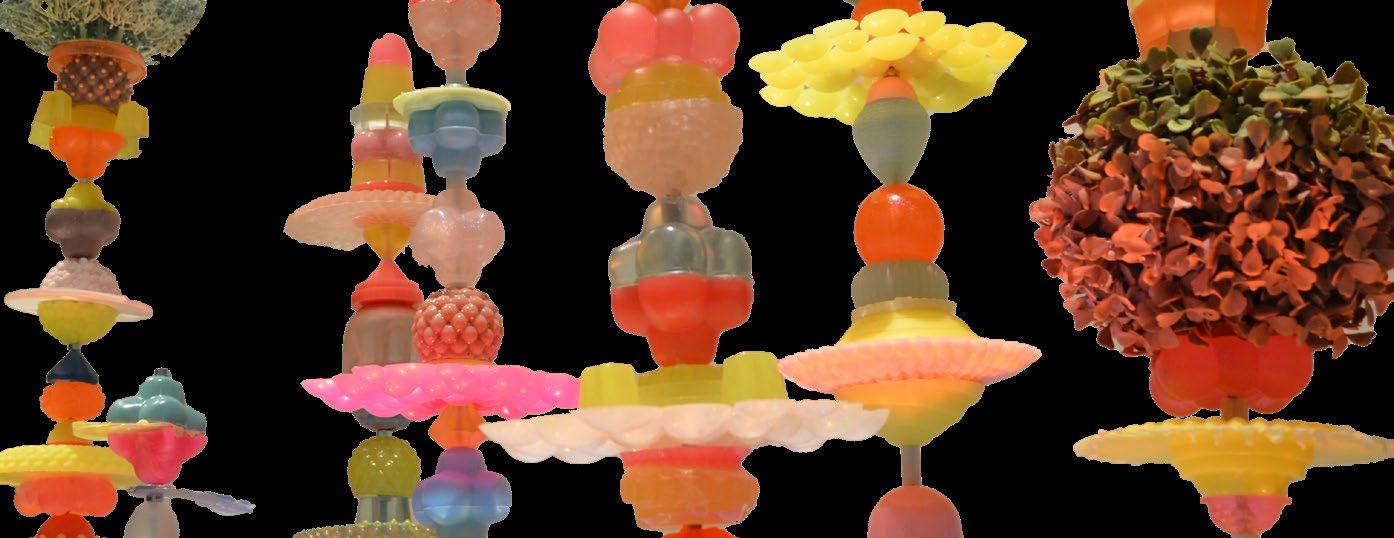
Page 44-45-The first ever official Observer Art Zine
Page 46-Legacy Artists in Ellensburg
How do we publish The Observer, anyway?
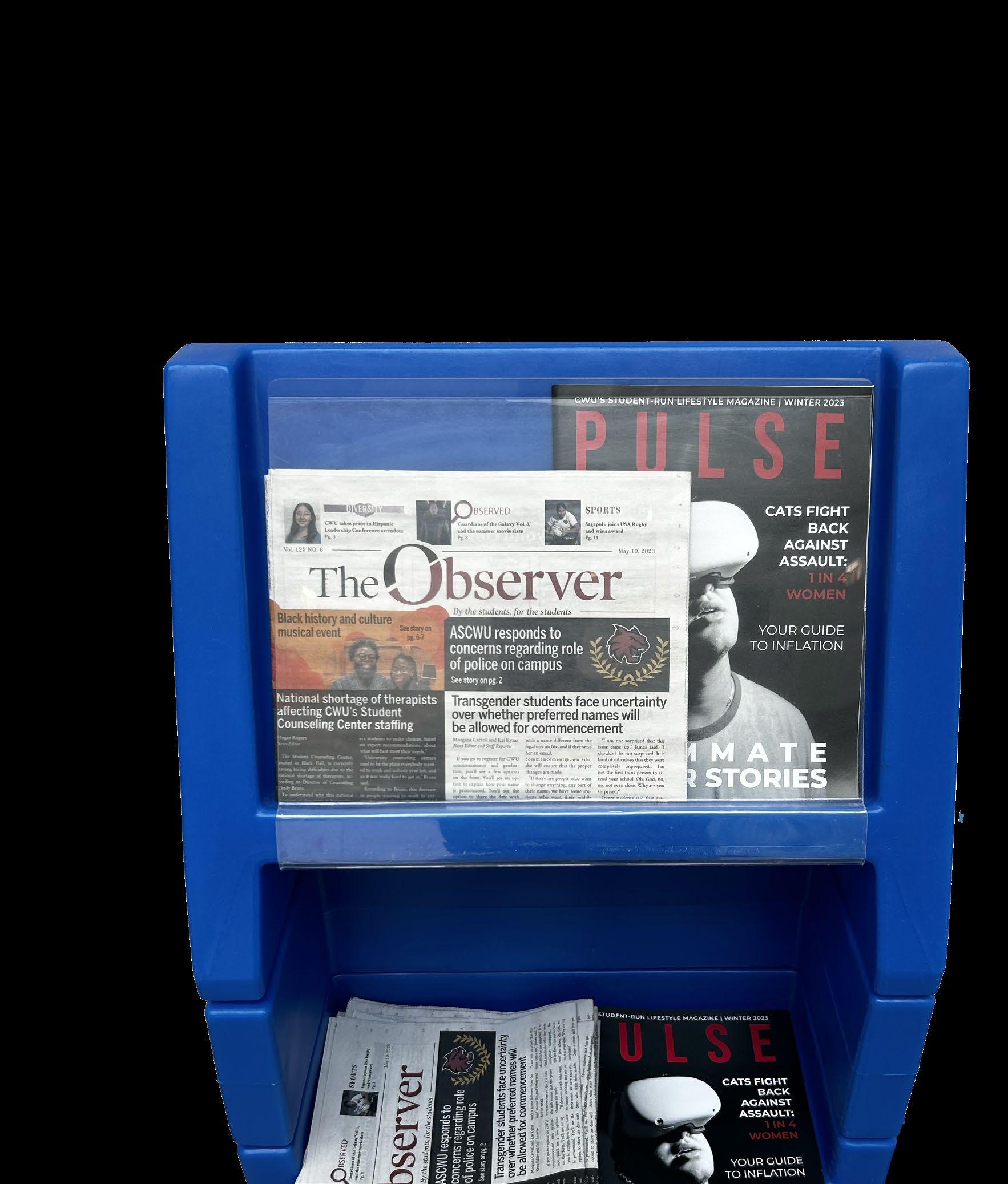
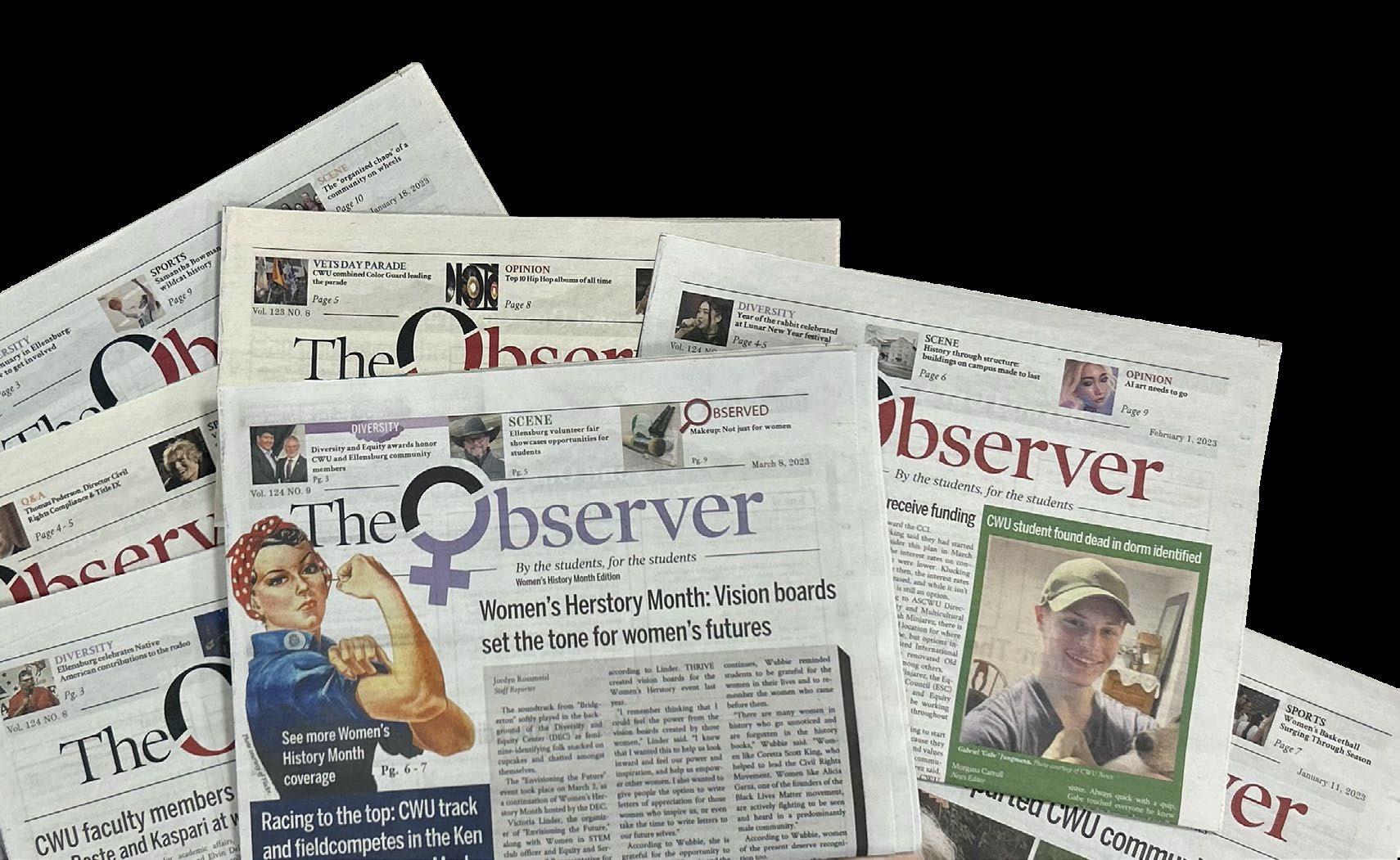
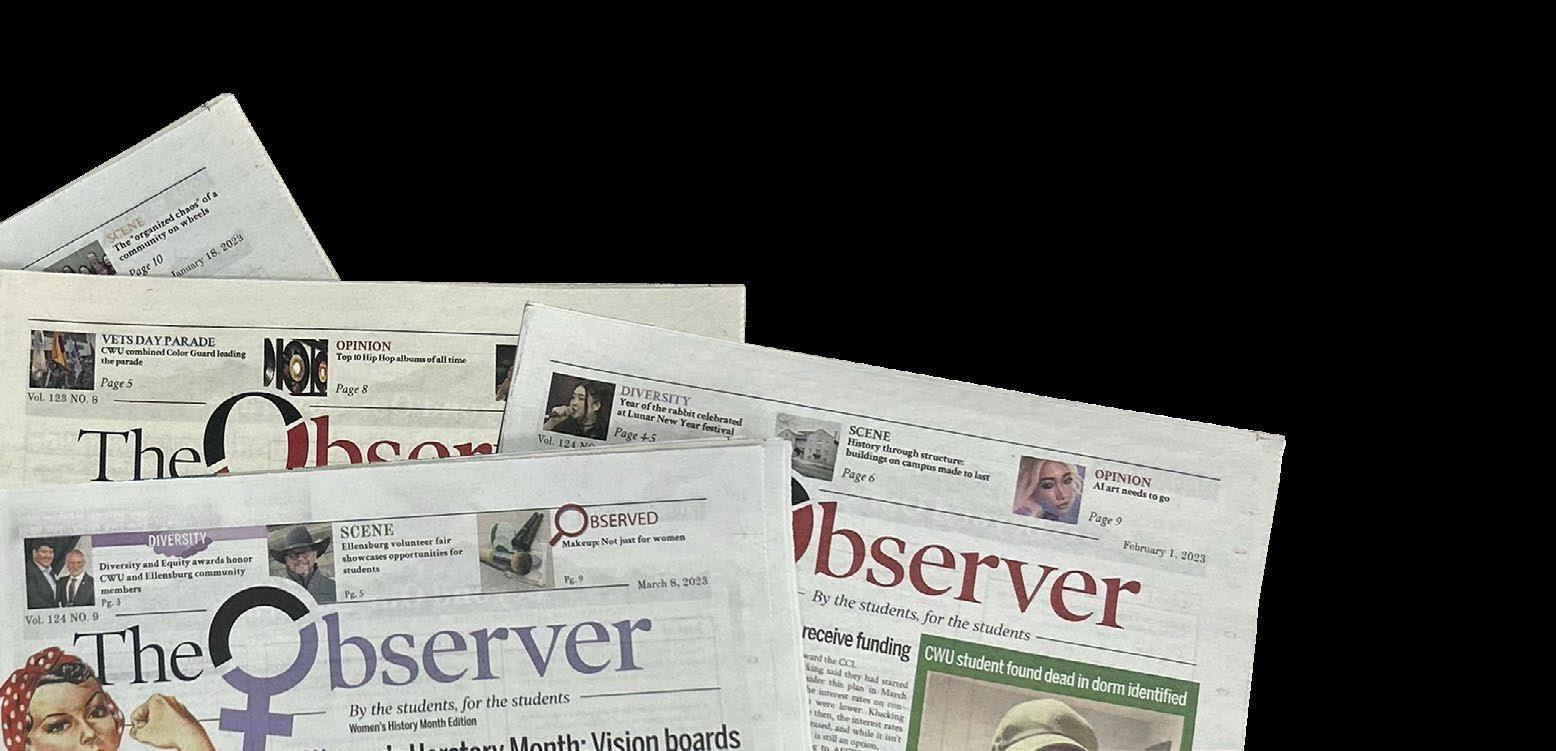
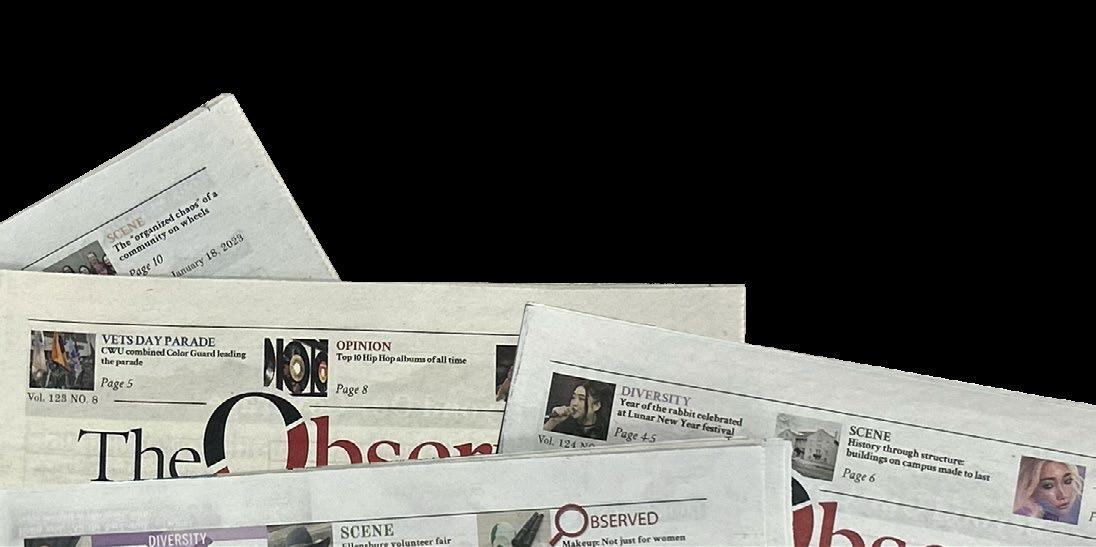
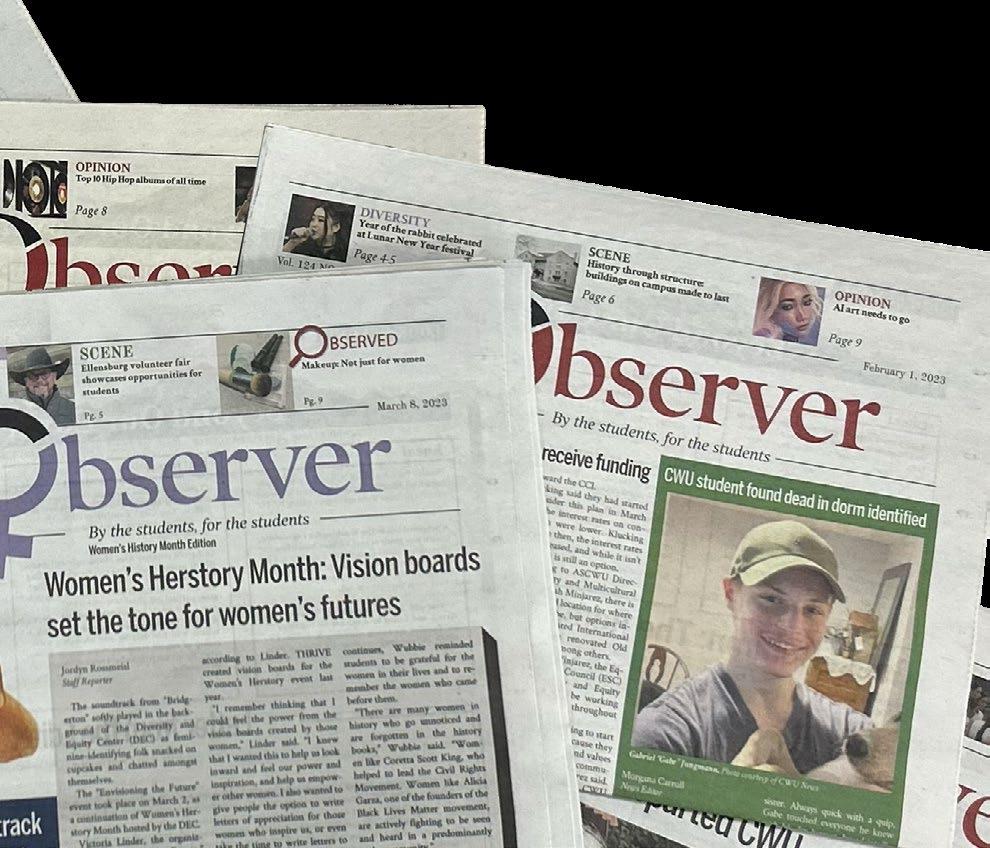
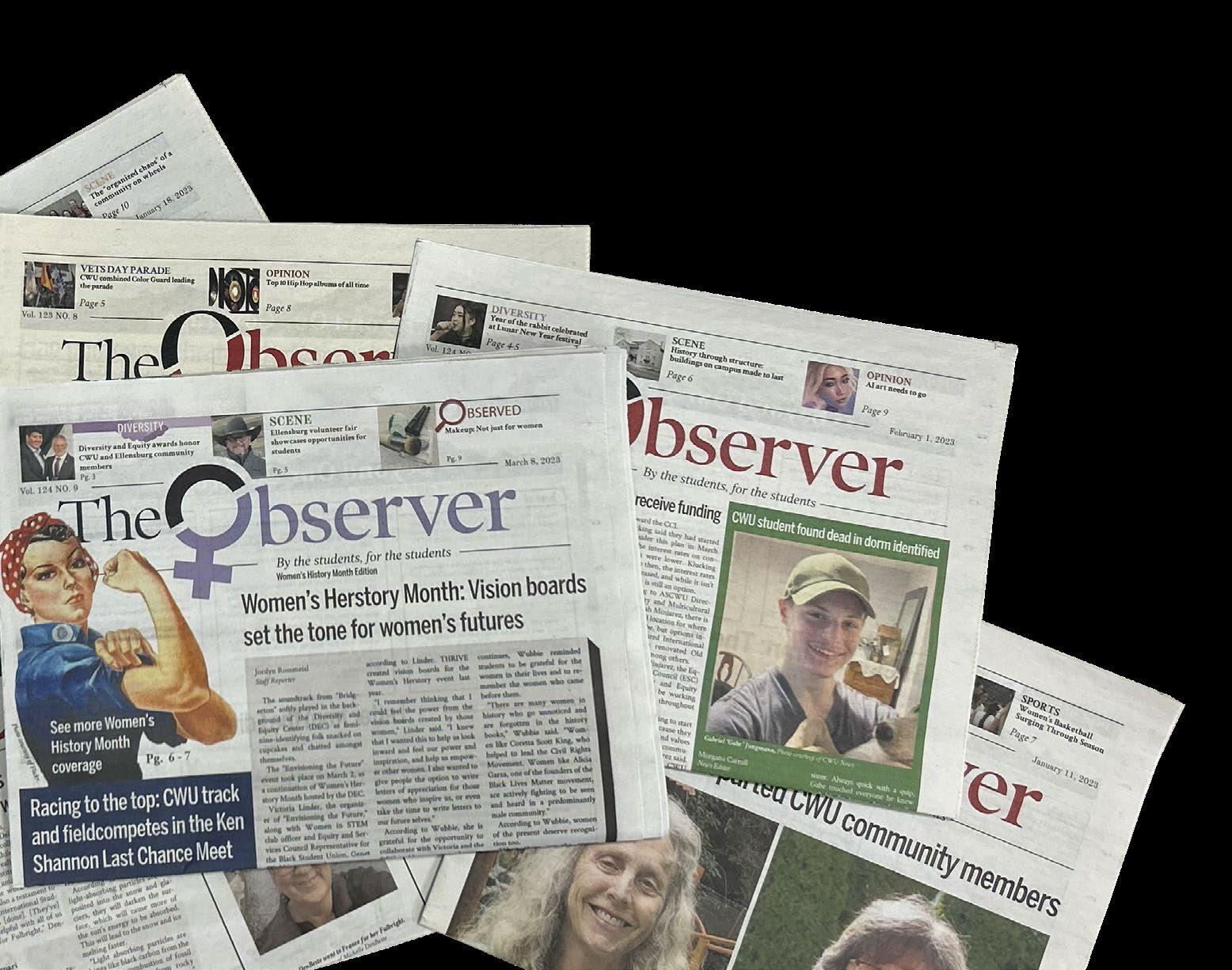
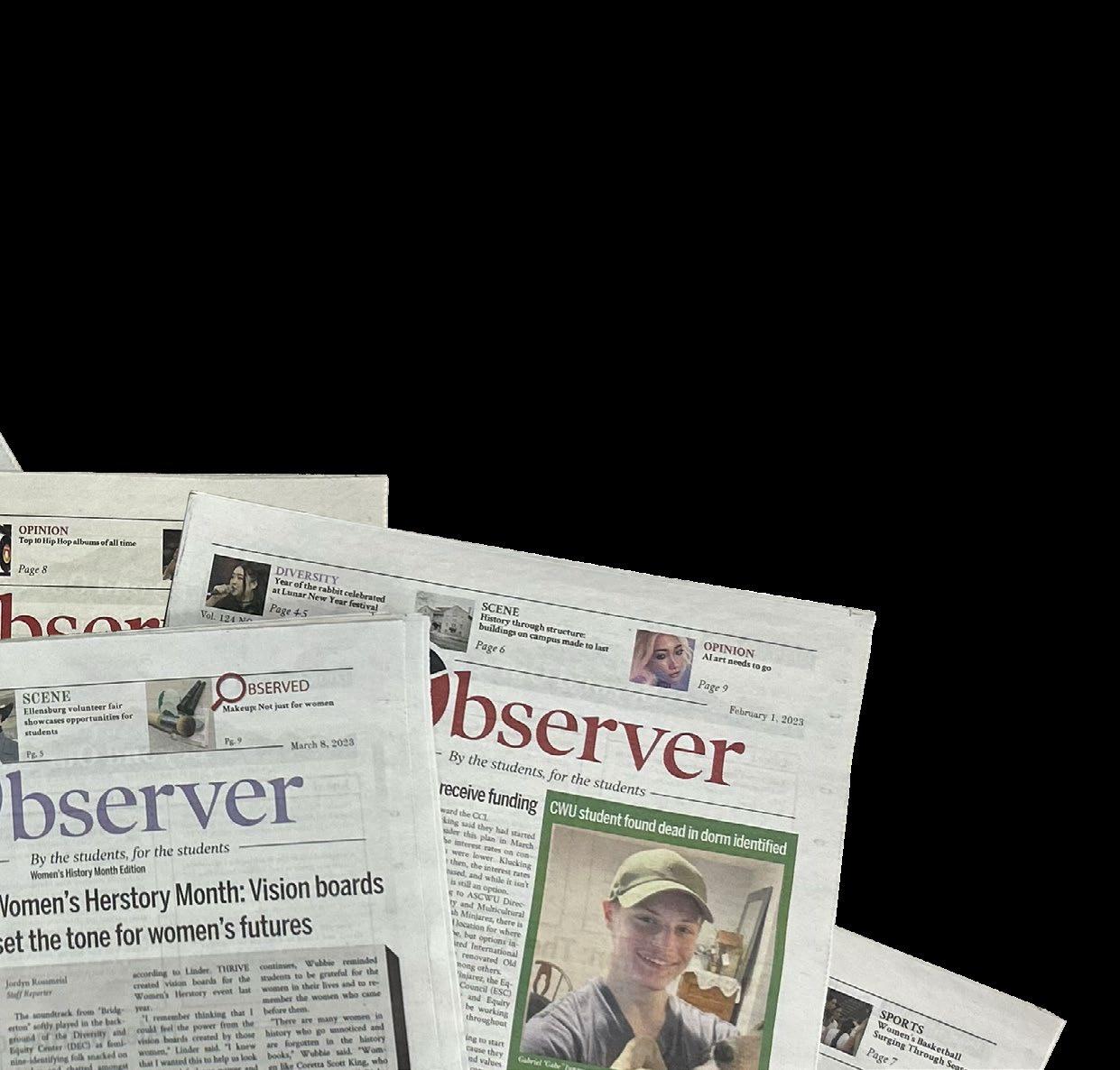
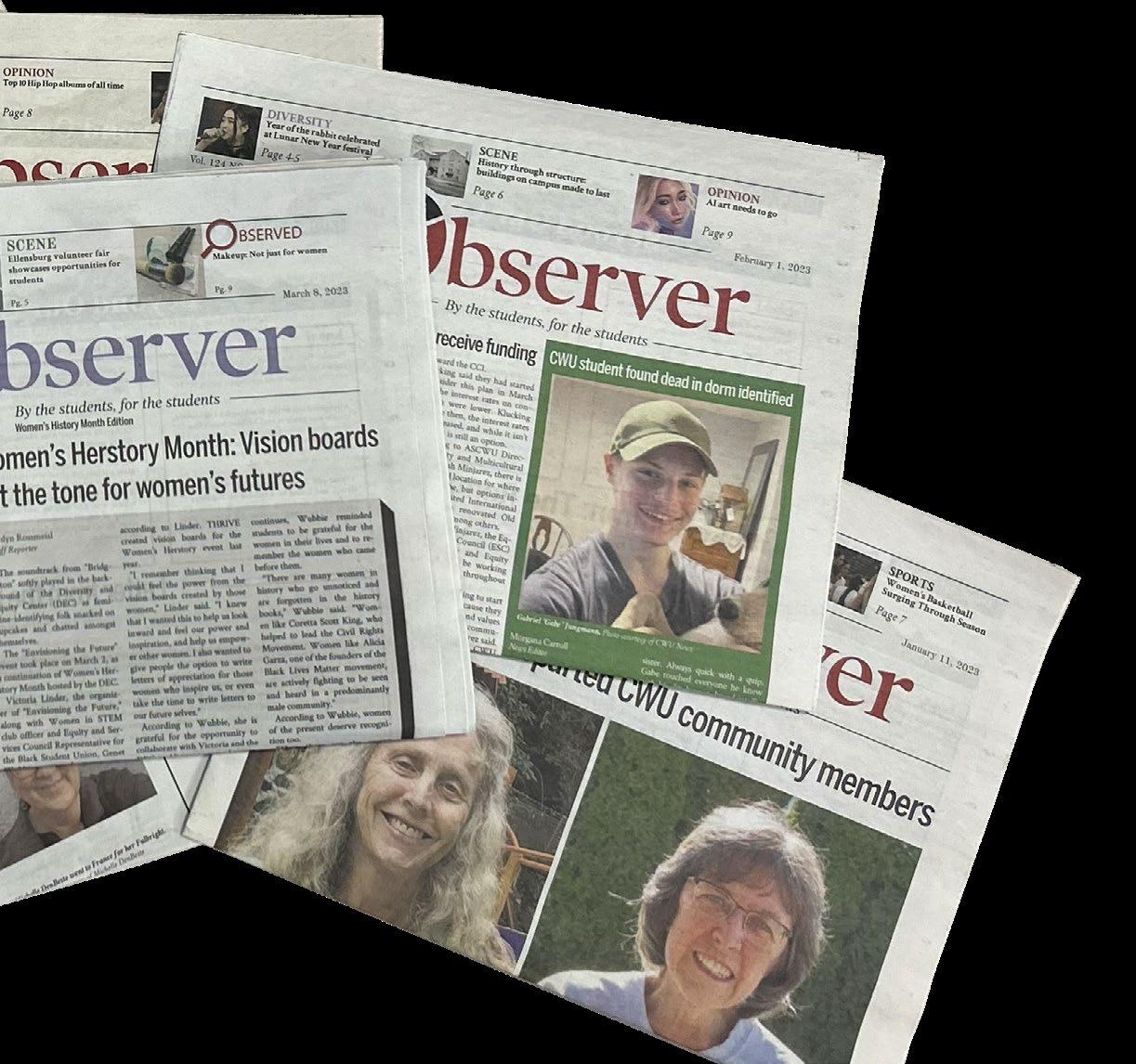
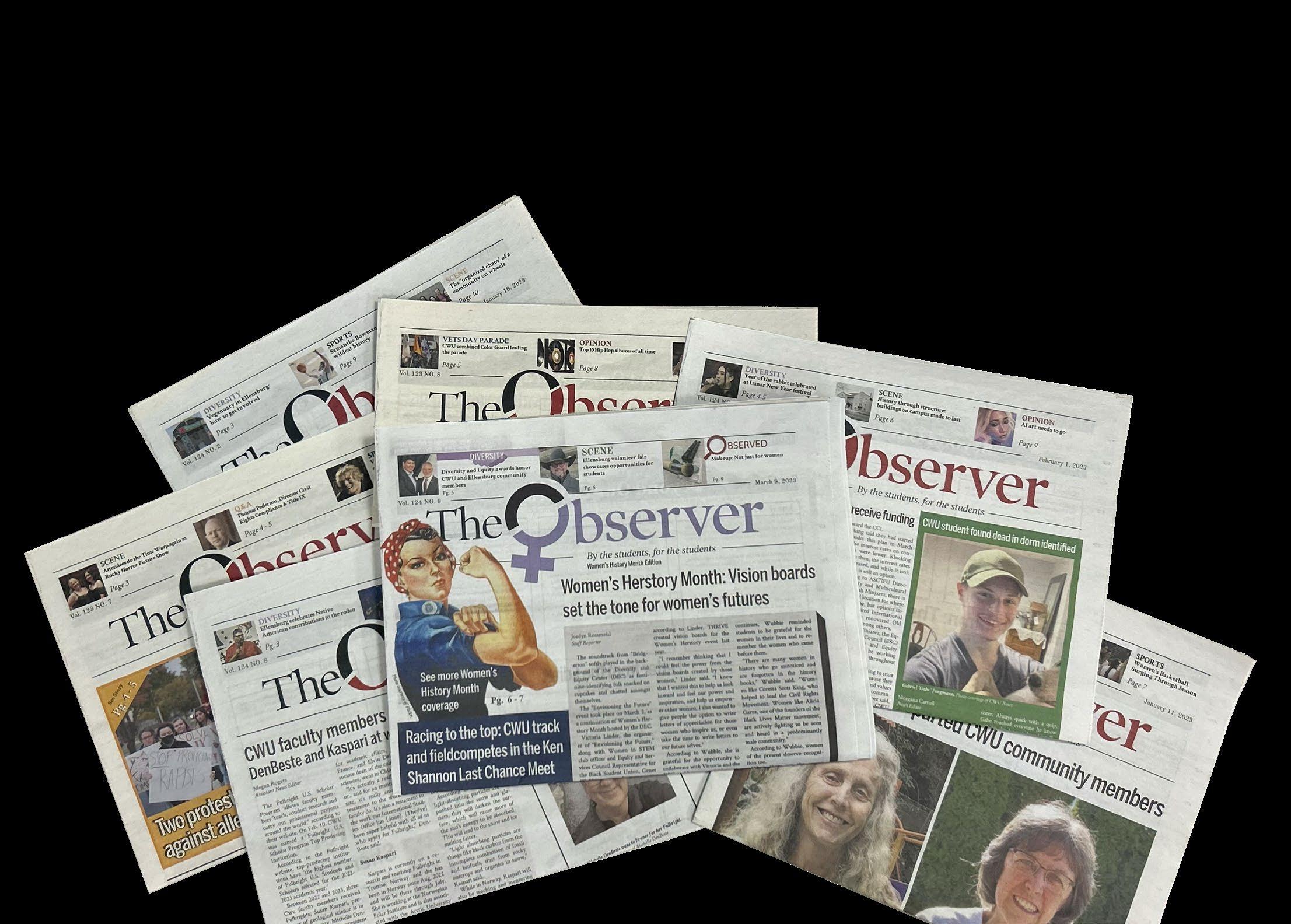
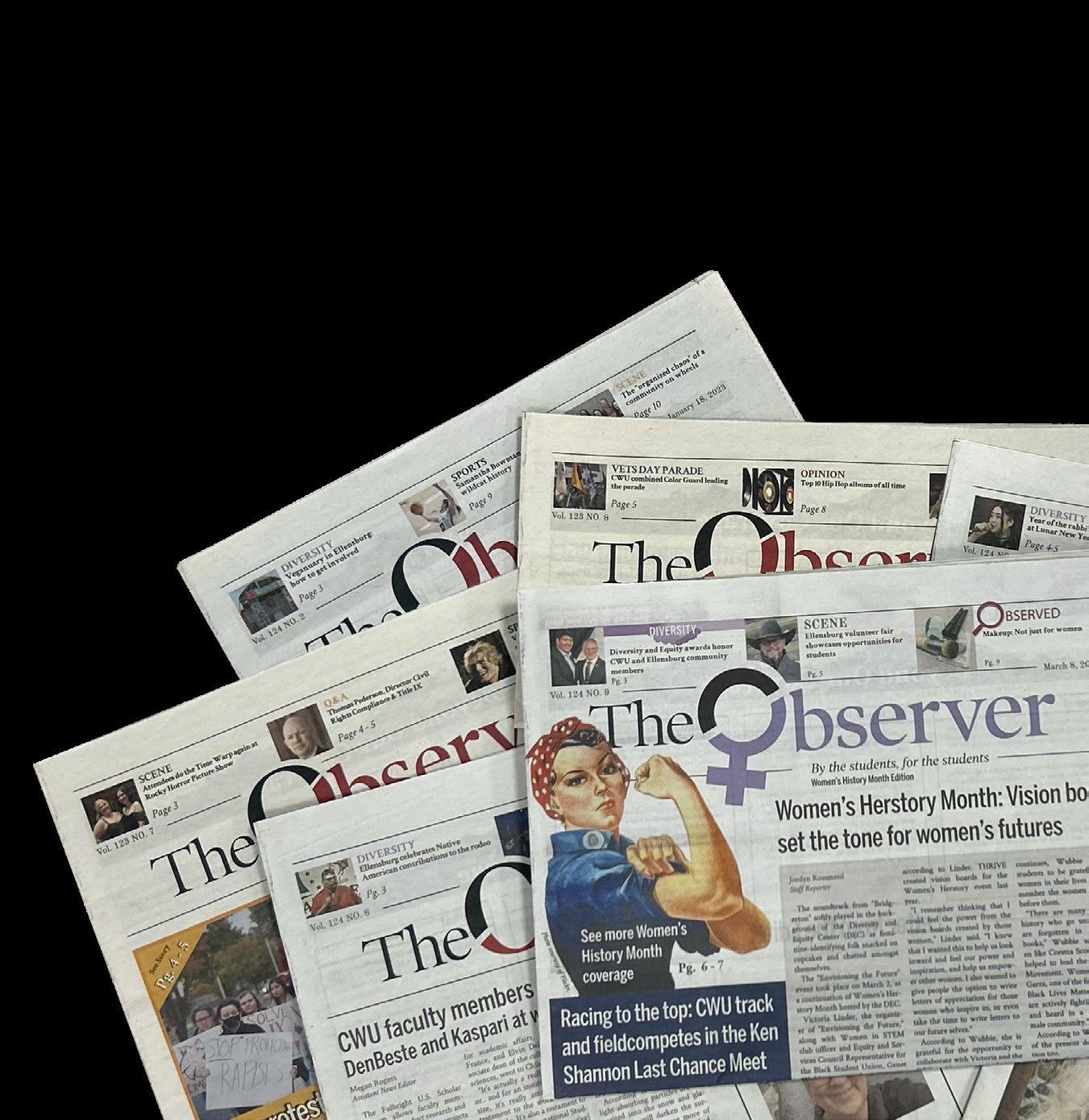
Katherine Camarata Lead Editor
Step 2: Edit drafts.
After stories are assigned, buckle up because it's time for some brutal honesty. The Associated Press Style guidebook is our holy grail, and the Google suite is our wine. Copy and section editors leave comments on story drafts in Google Docs, letting reporters know what information they are missing and make format suggestions per AP Style rules (which change every year and seem behind the times, if you ask me, so we take some liberties.)
Step 4: Cry then laugh. Simple as that. It can be hectic trying to stay on top of reporters and their deadlines as well as my own deadlines, not to mention the occasional public apology for a typo made at 1 a.m.. No matter how much we obsess over editing during design night, some mistakes are bound to slip through. Crying is a healthy way to release the pressure of needing to be perfect, which is impossible. I don't always shed a tear for The Observer, but maybe I should more often.
Step 1: Pitch stories and find sources. One of the more social parts of class, where reporters have to share (out loud) ideas for what they want to write about. They receive story assignments from section editors and reach out to sources (professors, random students, mad scientists, it varies wildly). With a click of the send button, our staff is on its merry way to a full set of pages.
While some may say it's best not to see how the meatless sausage is made, we at The Observer believe it's your right to see beyond the curtain of secrecy into our behind-the-scenes process. In five simply reductive steps, I'll explain to you everything that goes into creating our weekly newspaper. Interested
Step 3: Design the flat plan. This is where the magic happens, if magic was made out of frustration. The lead editor draws up the flat plan every Friday, a mockup layout of the upcoming issue. Fitting the right sto ries on the right page is always a puzzle. I was known to burn through seven or more drafts for each flat plan, until I realized this is a job better left for graphite than ink. Erasers are the unsung hero of step three.
Step 5: Design Night, for final edits and laying out pages. Where it all comes together or falls apart. Our










